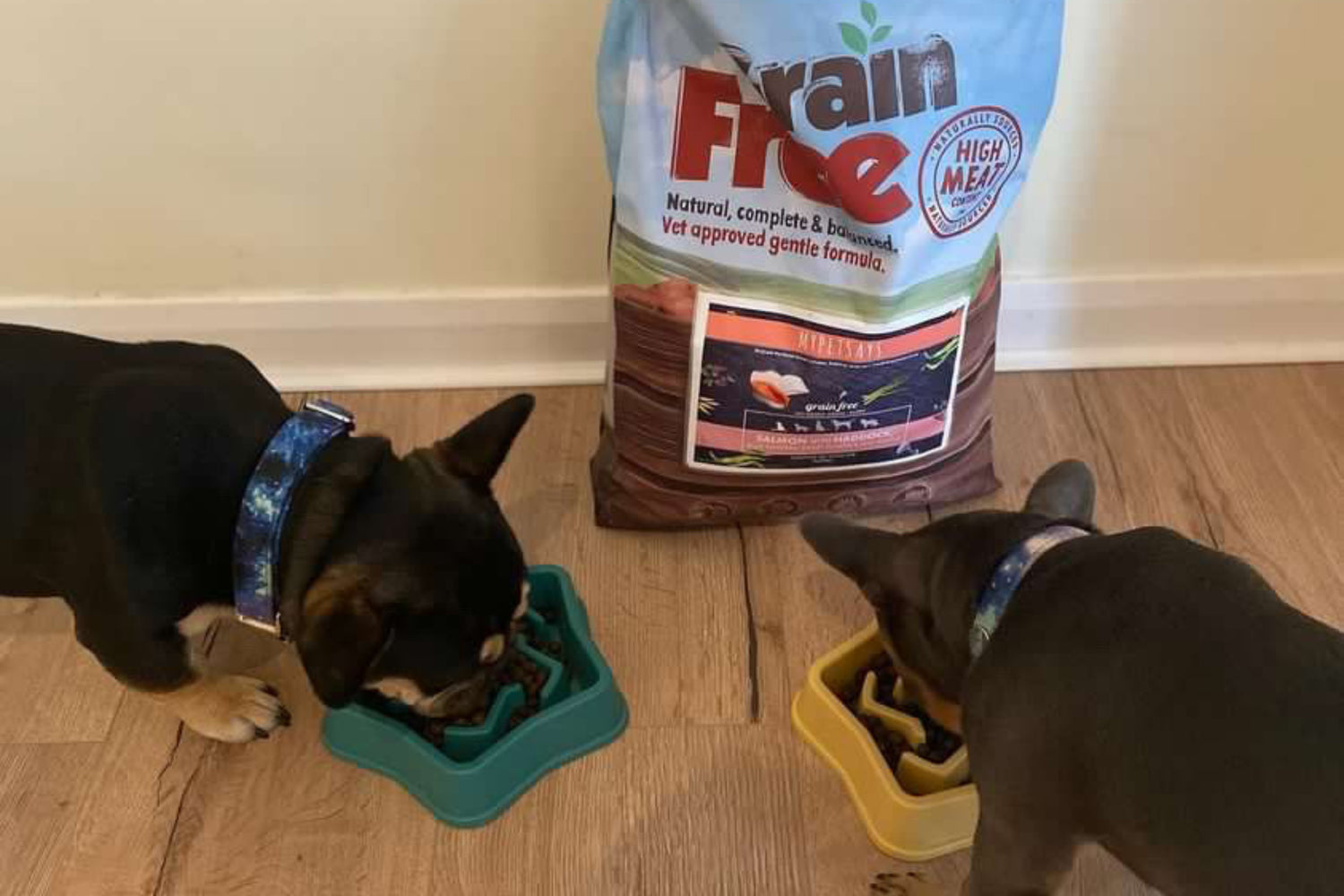When it comes to choosing the right food for your dog, there are many options available. One such option that has gained popularity in recent years is grain-free dog food. But what exactly does it mean for a dog food to be grain-free? And why should you consider making the switch? In this blog post, we will delve into the world of grain-free dog food and explore the reasons why it has become a preferred choice for many dog owners.
Grain-Free Dog Food
Grain-free dog food has gained significant popularity in recent years as more dog owners became aware of potential food allergies and sensitivities in dogs. The idea behind grain-free diets is that by eliminating grains, dogs may experience improved digestion, reduced food allergies, and overall better health. It's important to note that while grain-free dog food has gained popularity, it is not the only option available for dog owners. Many dogs thrive on diets that include grains, and it ultimately comes down to individual preferences and the specific needs of each dog.
Benefits of Grain-Free Dog Food
Food Allergies and Sensitivities:
One of the primary reasons to choose grain-free dog food is to address potential food allergies or sensitivities in dogs. Grains, particularly wheat, corn, and soy, are known allergens for some dogs. By eliminating these ingredients from their diet, you can alleviate symptoms such as skin irritations, gastrointestinal issues, and itchiness.
Improved Digestion:
Grain-free dog food is often formulated with easily digestible ingredients. By removing grains, which can be challenging for some dogs to digest, it is believed that their digestive systems can function more efficiently. This may result in reduced instances of indigestion, gas, and stomach discomfort.
Energy and Vitality:
Supporters of grain-free dog food argue that by providing dogs with a diet that more closely resembles their natural ancestral diet, they can experience increased energy levels and overall vitality. The belief is that dogs may thrive on diets that are primarily protein-based, with a reduced reliance on carbohydrates.
Shiny Coat and Healthy Skin:
Feeding dogs a grain-free diet results in improved coat condition and healthier skin. It is believed that the removal of potential allergenic grains may help reduce inflammation and promote a healthier coat.
It's important to note that while these benefits are often associated with grain-free dog food, individual experiences may vary. It is essential to consider your dog's specific needs, consult with a vet, and monitor their response to any dietary changes.
Choosing the Right Grain-Free Dog Food
When it comes to choosing the right grain-free dog food for your furry friend, there are several factors to consider. In this section, we will provide guidance on how to make an informed decision and select the best grain-free dog food for your dog's specific needs.
Key Nutrients in Grain-Free Dog Food
Protein: Dogs are primarily carnivorous animals, so a high-quality source of animal protein should be the foundation of any grain-free dog food, as it is in MyPetSays Grain Free Dog Food. Look for proteins like chicken, beef, fish, or lamb listed as the first ingredient on the dog food label.
Healthy Fats: Fats are an important energy source for dogs and help support healthy skin and coat. In MyPetSays Grain Free Dog Food, you can find healthy fats like salmon oil or chicken fat in the ingredient list.
Carbohydrate Alternatives: Since grain-free dog food eliminates grains as a source of carbohydrates, alternative carbohydrate sources are used. MyPetSays Grain Free Dog Food contains sweet potato and potato, which are excellent carbohydrate alternatives to grains.
Vitamins and Minerals: A well-rounded grain-free dog food should contain essential vitamins and minerals to support your dog's overall health. Look for added vitamins and minerals such as vitamin A, vitamin E, vitamin B complex, and minerals like zinc and selenium. You can find them in our grain-free recipes.
How to Read and Understand Dog Food Labels
Understanding how to read and interpret dog food labels is crucial when choosing the right grain-free dog food. Here are some tips to help you navigate through the label:
Ingredient List: The ingredient list on the dog food label is listed in descending order by weight. Look for high-quality animal protein sources listed as the first few ingredients.
Analytical Constituents: Provides information about the minimum percentages of crude protein, crude fat, crude fibre, and maximum percentages of moisture in the dog food. Ensure that the percentages meet the nutritional needs of your dog.
Avoid Artificial Additives: Opt for dog food like MyPetSays dog food that avoids artificial colours, flavours, and preservatives.
Photo by @max_lola_frenchie_love




Leave a comment
This site is protected by hCaptcha and the hCaptcha Privacy Policy and Terms of Service apply.